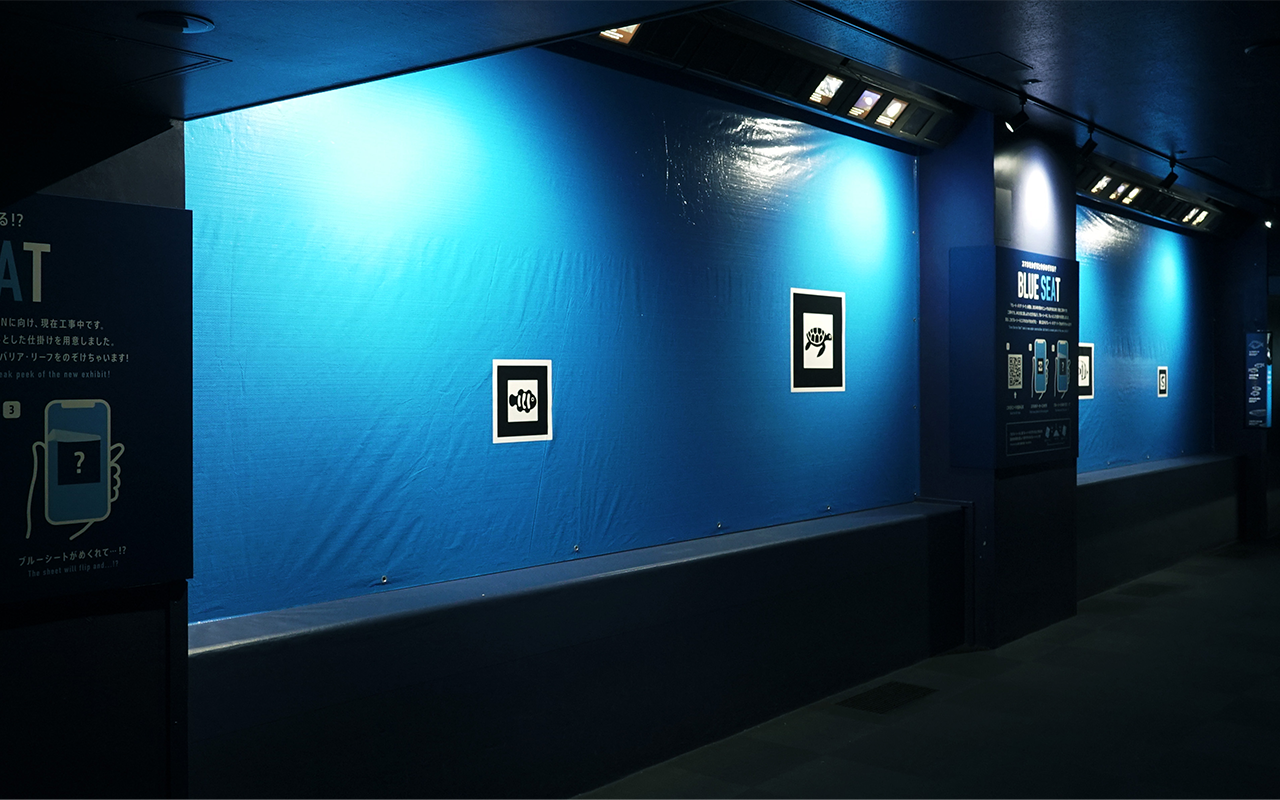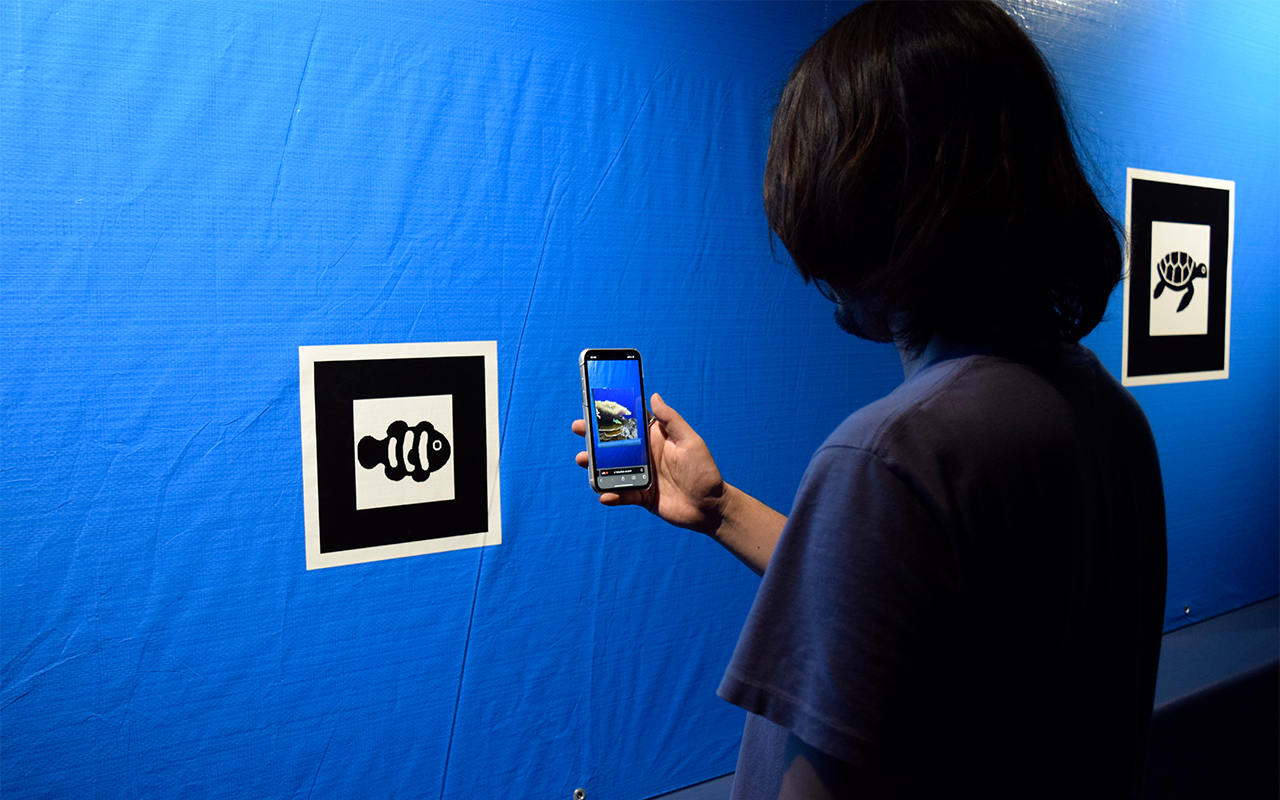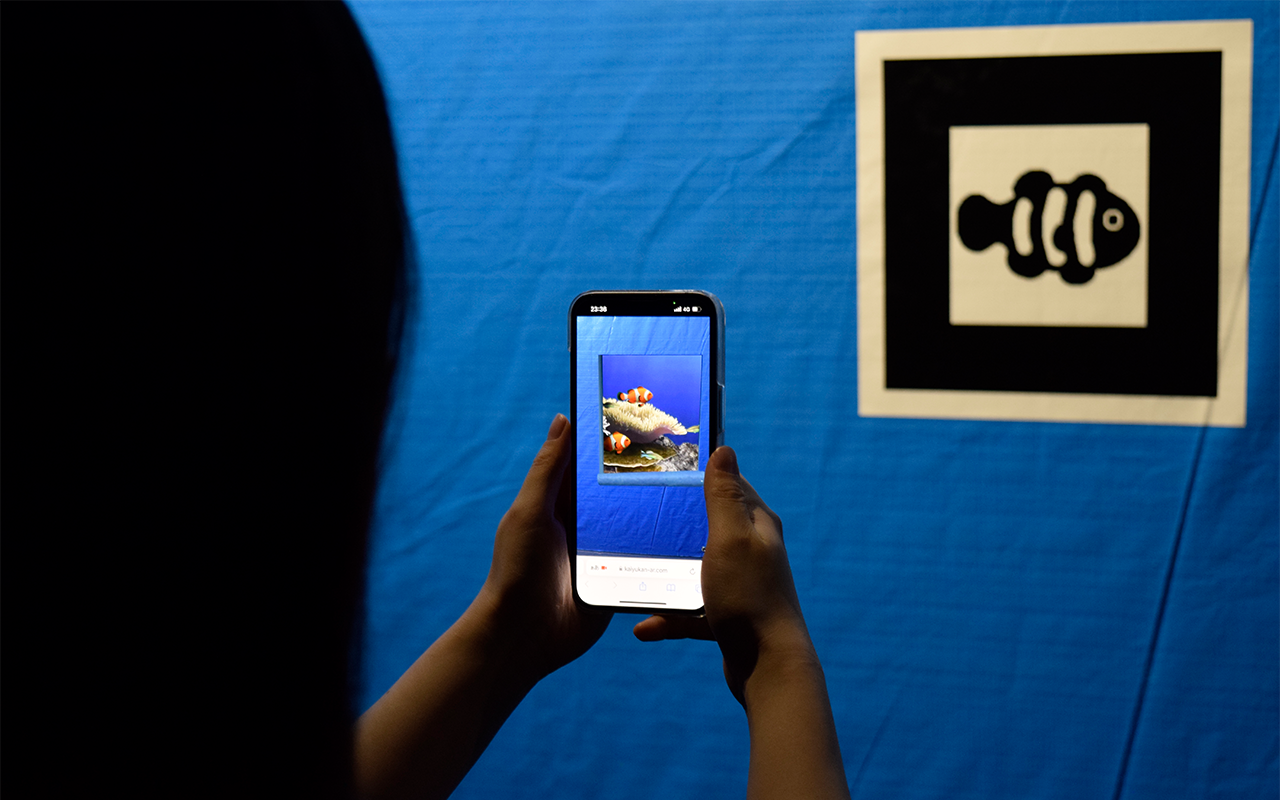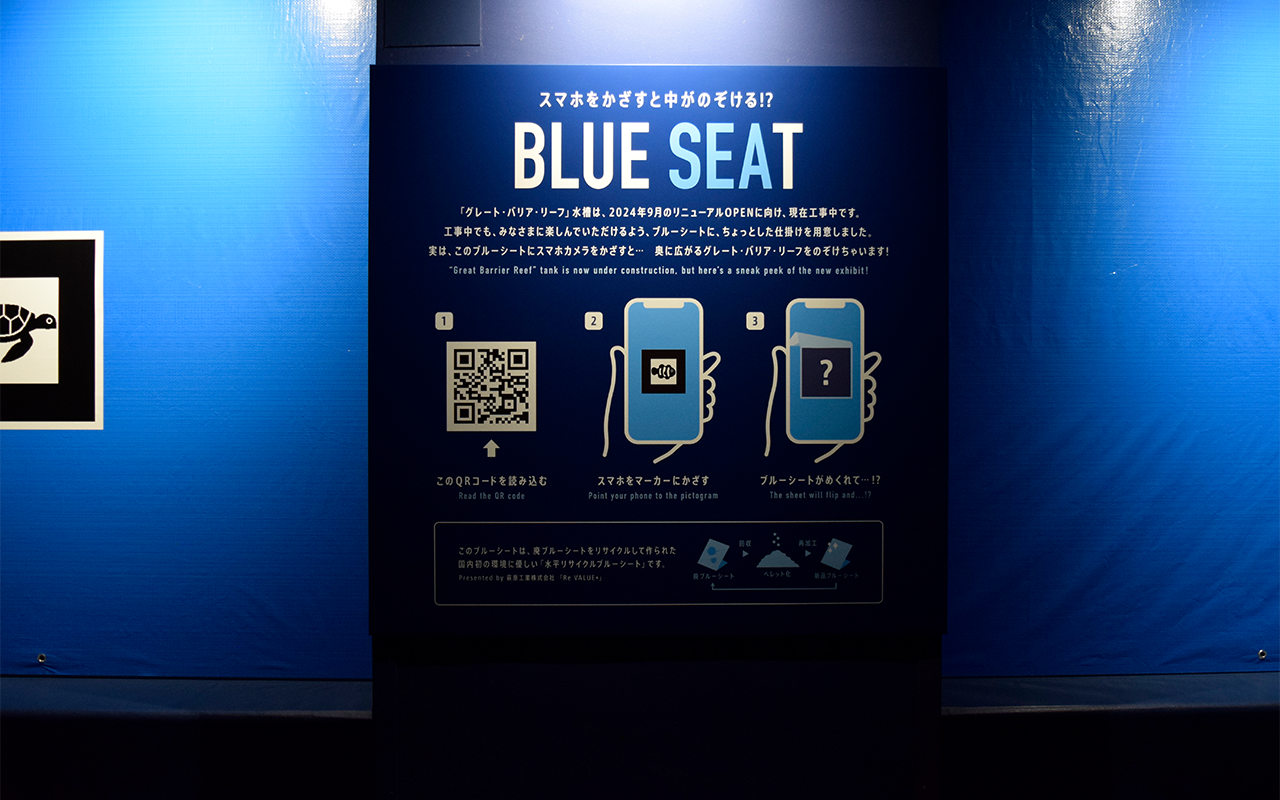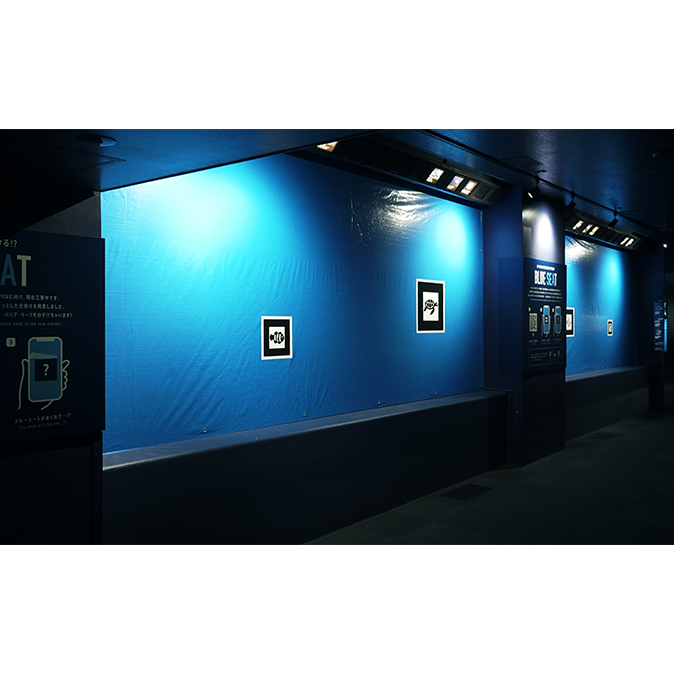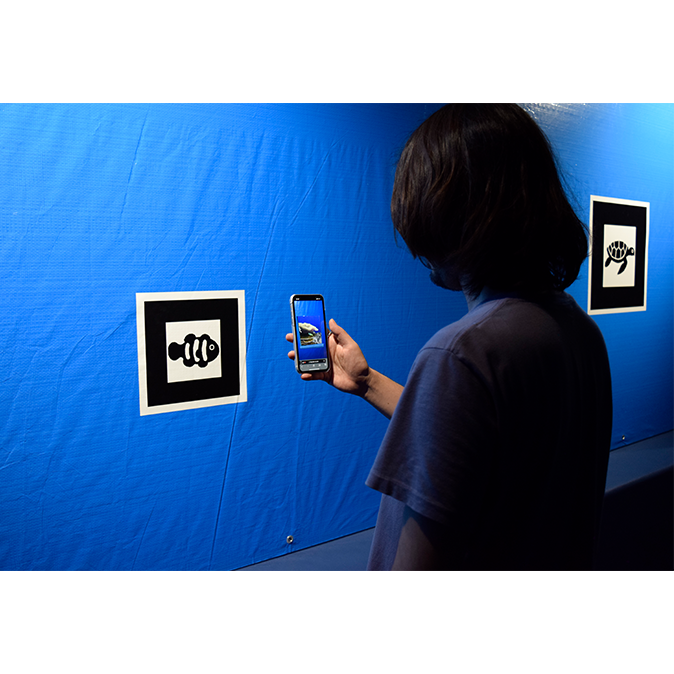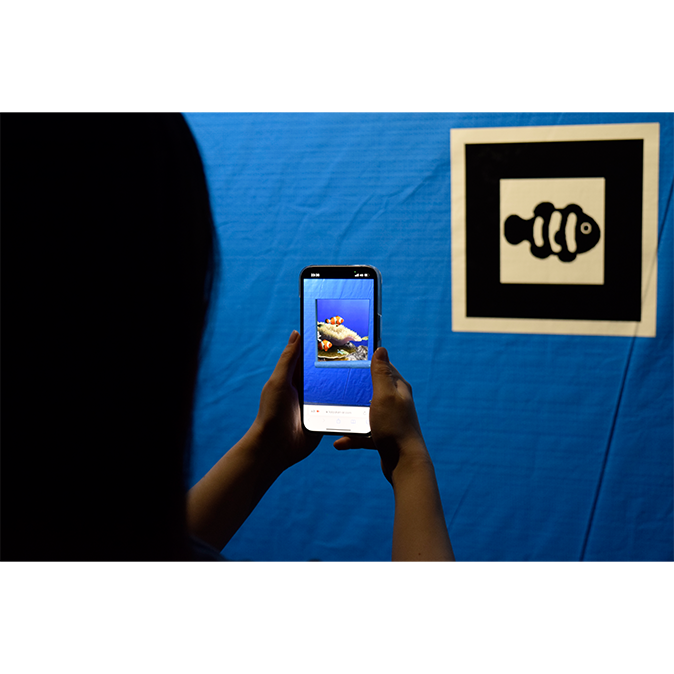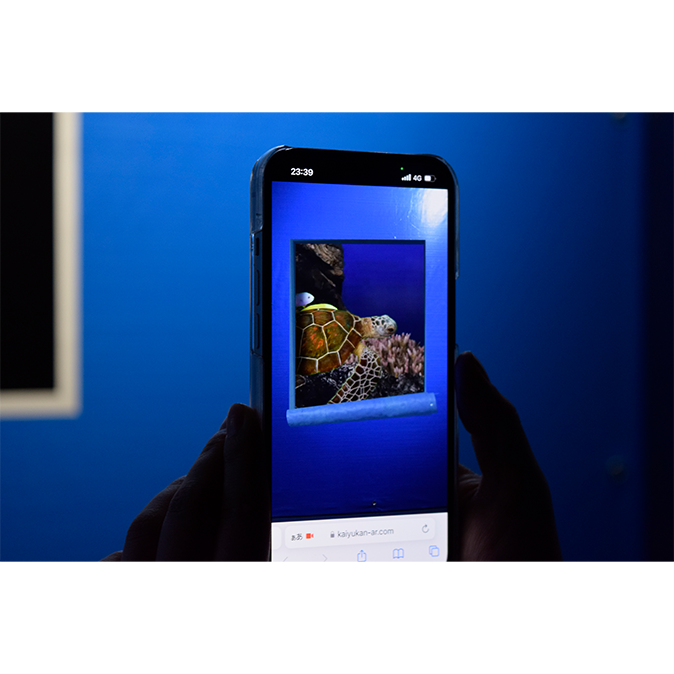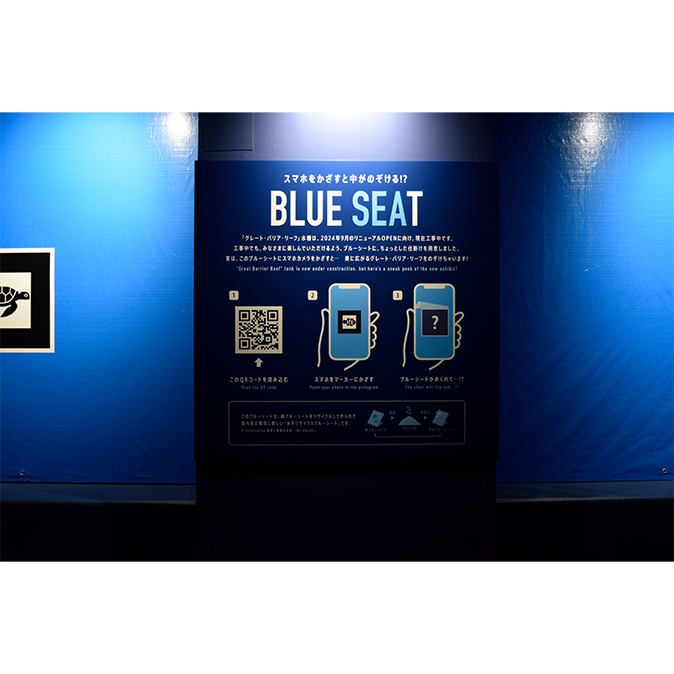Background
Osaka Aquarium Kaiyukan’s Great Barrier Reef coral reef tank was scheduled to be closed for a long period for renovation work. During the construction work, the tank would be hidden from view with a large blue sheet.* Aquarium officials, however, were concerned this would break the continuity of the exhibits, diminish the aquarium’s overall worldview, and lower visitors’ experiential value and satisfaction.
Our idea was to make use of the side of the covered-up tank, which would otherwise be a lost opportunity, and convert it to a medium only possible with an aquarium tank—a place to connect with various stakeholders—while also driving more visitors to the aquarium.
*Blue sheets
Japan’s construction industry has commonly used thick blue plastic sheets since the 1960s and 1970s to protect and conceal construction sites and cure concrete installations.
Strategy
Turn the blue sheet, which is intended to hide the inside of the tank, into an AR experiential medium that lets visitors peek at the sea inside.
A tank surface covered with a blue sheet that broke the continuity of the aquarium’s exhibits for stakeholders was a lost opportunity. Our idea, however, was to change this lost opportunity into a golden opportunity to gather and connect people with the aquarium.
With the cooperation of the aquarium and a manufacturer of construction sheets, two very different businesses, we built a special place that could only be realized during the renovation. Specifically, an AR experience was designed where visitors could point their smartphone camera at symbols on the blue sheet and watch the sheet peel back and reveal what’s inside.
The project also used the industry’s first blue sheet produced through horizontal recycling. This low-environmental-impact blue sheet echoed the aquarium’s message of marine conservation (the microplastics issue) and added value to an empty tank, which would have otherwise been a lost opportunity. The project also promoted the tank’s reopening in the fall of 2024.
Execution
We provided an AR experience that tapped into the innate human desire to see what is hidden.
Visitors scan a QR code in front of the exhibit with their smartphone to activate the AR camera. When visitors point their camera at symbols of fish or sea turtles on the blue sheet, the blue sheet peels back to reveal the marine organisms living among the coral of the Great Barrier Reef.
1. The project inverted the blue sheet’s regular “concealing” function into a “revealing what’s inside” role.
2. By reversing the perception Japanese people have of blue sheets representing inactivity, it transformed a place without interest that people would normally pass by into a place that stimulates curiosity and creates experiences.
3. By providing a digital peek of what the tank will look like after the renovation, the project fueled visitors’ desires to see the entire real tank when it reopens.
4. We added a production gimmick only possible with AR, in which the blue sheet is peeled back, opening a hole through which visitors can see the sea (tank) on the other side.
5. The use of the first domestic horizontal-recycled blue sheet, which reduces CO2 emissions by about 65 percent, was consistent with the aquarium’s mission of communicating marine conservation messages.
Awards
-
2024 PR Awards Asia-Pacific: Gold (Campaign: Best Use of VR/AR/MR)







